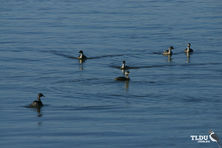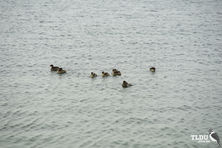
Shoppers Feedback:
Jan 17, 2017
Hello Ros,
I have now paid the invoice, but I would like to write to you just to say a big THANK YOU for getting me the Penguin!
The ChatterMate Penguin became a nice memory for me when I was in New Zealand, and I am so greatful to you for arranging so that I could have it! :-)
Thank you so much!!!!!!!!!!!
Regards,
Malin
Hi Ros,
Many thanks for your very kind email. I really appreciate your prompt reply!
I appreciate your advice regarding the decorations and customs. These are a gift for my daughter’s exchange student family so when she returns home on the weekend I will show her and see if she loves them as much as I do!
Thanks so very much again - I am truly grateful for your kind assistance.
Kind Regards
Bernadette
Ros,
Thanks again for the great customer service. It's a refreshing change!
Best regards,
Trevor
Hey Roz,
Thank you for your emails. Just loved my first order. The cute little Aussie bush critters are going to be used for an office Christmas decoration. My colleagues also liked them and talked about making an order to your site. I'll send you a photo when completed.
I'll be ordering more to send to my daughter's host family in America.
Fabulous service from you.
Kind regards,
Michelle
Thankyou. Order arrived today. One very happy grandson with his new beastly binoculars.
Regards,
Irene
- Home
- Wild Wonders
- Shop
- Aromas of Australia
- Australian Made
- Books
- Book Marks
- Christmas Decoration Sale
- Christmas Decorations
- Clocks
- Drink Holders
- Garden & Outdoor
- Gift Wrapping & Cards
- Home & Giftware
- Jewellery
- Keyrings
- New Products
- Pencils & Pen Holders
- Photo Frames
- Plush Toys
- Plush with Sound
- Sheepskin Rugs
- Stationery
- Stone Carvings
- Toys & Games
- Travel Goods
- Wedding
- Wild Figurines
- Wildlife Safety Products
- Wind Chimes
- Wine Charms
- View All Products
- Wildlife
- Australiana
- Explore
- Contact Us

Quick Facts
| Length: | 29 cm |
| Height: | - |
| Weight: | 240 grams |
| Colour: | Darkish grey and white plummage |
| Habitat: | Large open waterways which may be estuarine, brackish and freshwater |
| Food: | Aquatic arthropods |
| Predators: | - |
| Status: | Secure in all states and territories in Australia |
The Hoary-headed Grebe is a small stocky grebe. This grebe has a darkish grey and white plumage, an inconspicuous brown iris, a square black 'chin', and breeding adults develop a white streaking over their entire head (hence the name). There is a diagnositic narrow black streak down the nape of the neck. Juveniles have a striped face, white chin and throat, and a mottled brown and white hindneck. This species is also known as the Dabchick, Hoary-headed Dabchick and Tom Pudding.
Sharing a similar size and build, when in non-breeding plumage, the Hoary-headed Grebe is often confused with the Australasian Grebe, but it can be distinguished by its dark crown that extends below the eye. It also has a greater tendency to fly off rather than dive when approached.
The Hoary-headed Grebe is found in all states and territories of Australia. It is generally absent from the central arid regions of Australia.
The Hoary-headed Grebe is usually found away from the shoreline in large open waters, which may be estuarine, brackish or freshwater.
Movements of the Hoary-headed Grebe are poorly known, however the species is thought to occur wherever surface water persists after rain.
The Hoary-headed Grebe feeds on aquatic arthropods, mostly caught by deep diving. This species feeds during the day, and when the light is poor, forages mostly at the water surface.
The Hoary-headed Grebe breeds in simple pairs in colonies. It constructs its nest well offshore in the shallows amongst floating waterweeds or scattered, open lignum, sedges, reeds or other saltmarsh vegetation, from waterweeds which are loosely attached to submergents, sedges or fallen branches. Both parents assist in incubation.
Within coastal areas, the Hoary-headed Grebe can be vulnerable to oil slicks. The artificial regulation of floodwaters may prevent breeding in some areas.
Last Updated: Wednesday 17th July, 2013
BUSH e-TELEGRAPH
Signup for our monthly newsletter the "e-Telegraph"
Quick Links
Home | The Beginning | About The Land Down Under | Wild Wonders | Advertise on Wild Wonders | Christmas Decoration Sale | Christmas Tree Decorations | Drink Holders | Plush with Sound | Stone Carvings | Wildlife Wine Charms | Freebies | Australian Wildlife | Help Our Wildlife | Australiana | Photo of the Month | Explore The Land Down Under | Contact Us | Legal Notices


